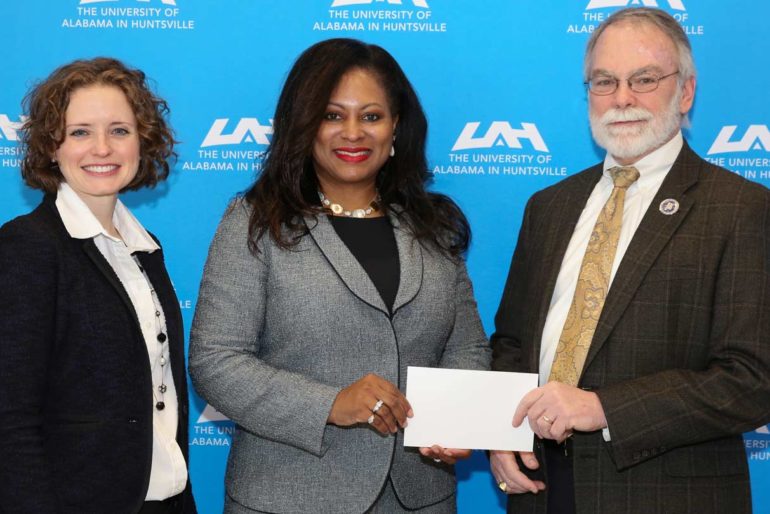A $5,000 donation from LogiCore Corporation, a logistics and engineering services company in Huntsville Alabama is helping the Alabama Space Grant Consortium (ASGC) to design and build the first in a planned series of statewide collaborative cube satellites (CubeSats).
A recent workshop about the project, which will carry a gamma-ray burst (GRB) detector to be placed in the vicinity of the moon to detect short gamma-ray bursts, was partially sponsored by the LogiCore donation.
“LogiCore helped to offset expenses associated with holding the recent Alabama Student CubeSat Workshop with its generous donation, which we appreciate,” says Dr. Dale Thomas, who is the ASGC director as well as a professor and the eminent scholar in systems engineering at The University of Alabama in Huntsville (UAH).
“In addition to facility rental and food, there were travel expenses and also lodging expenses for participants from south Alabama. Because of the support of LogiCore and other Huntsville area sponsors, the ASGC was able to conduct the workshop without cutting other programs to offset the expenses.”
LogiCore President and CEO Miranda Bouldin says she has a strong belief that education is key to opening doors and can be a powerful tool for success in life. “Sometimes financial barriers are the deciding factor for participation and engaging in extracurricular programs such as the CubeSat workshops,” she says.
“The ability to solve complex problems and think critically begins in early education and continues through adulthood,” Bouldin says. “I have been fortunate and blessed to have the opportunity to support education and encourage lifelong learning. It brings me joy to have a role in preparing our youth for tomorrow’s challenges.”
The ASGC workshop covered the CubeSat’s main payload and science, systems engineering, thermal protection and control, power systems, attitude determination and control, communication systems, and structures and deployment mechanisms. Academic and industry mentors spoke and coached those involved.
Based at The University of Alabama in Huntsville (UAH), ASGC member universities are Alabama A&M University, Auburn University, Tuskegee University, The University of Alabama, The University of Alabama at Birmingham, UAH and University of South Alabama.
Proposed by Dr. Michael Briggs, assistant director of the Center for Space Plasma and Aeronomic Research (CSPAR) and a principal research scientist at The University of Alabama in Huntsville (UAH), the GRB detector CubeSat was selected from four ASGC member submissions by Dr. David Beale, ASGC campus director for Auburn University and the principal investigator for the Alabama CubeSat Initiative.
The collaborative effort is expected to involve over 100 students from all seven universities during academic year 2018-2019.

